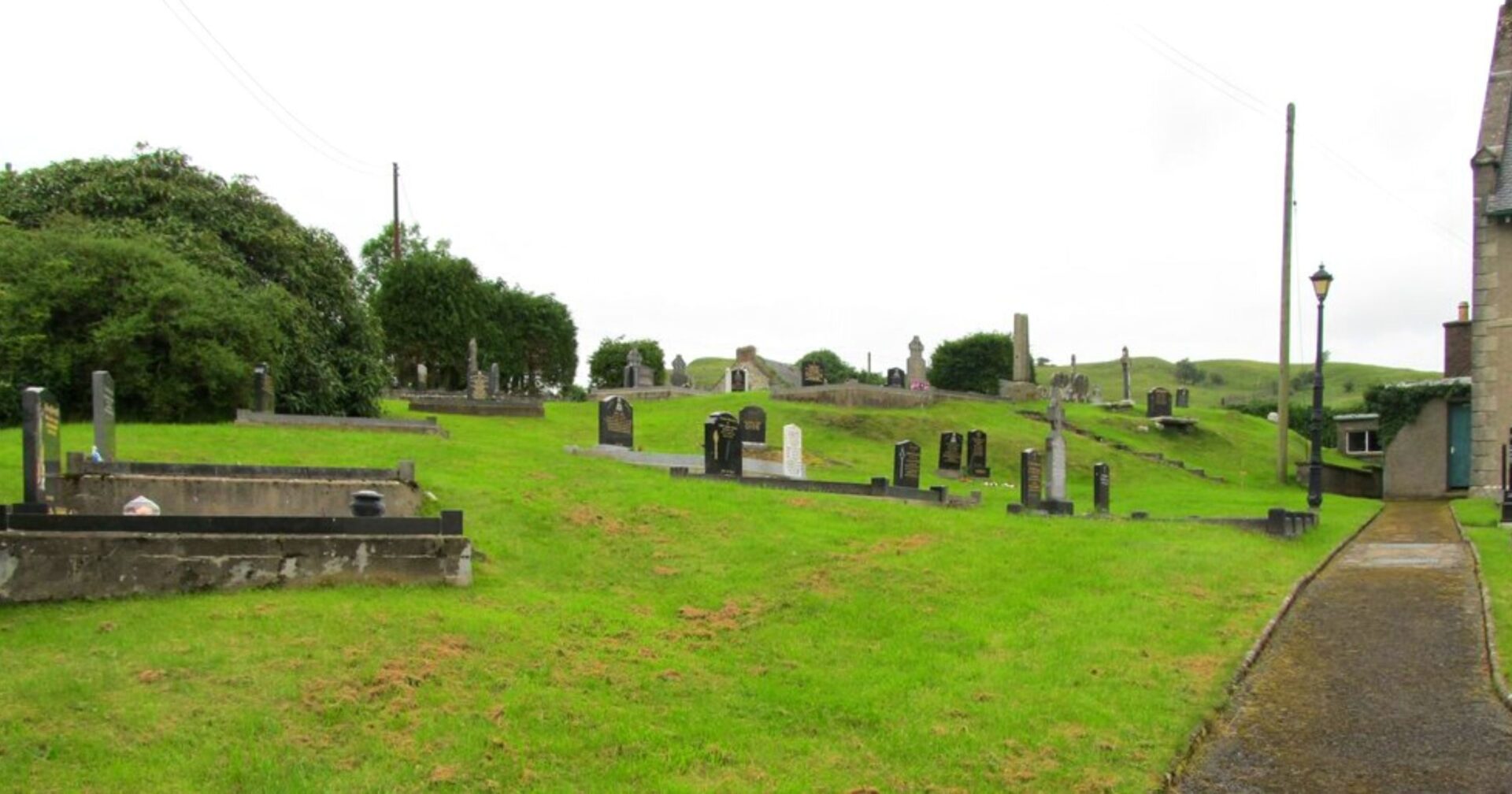In County Fermanagh of Northern Ireland lies the ancient hamlet of Boho, a land area with a history of being inhabited by man for nearly 4000 years – since at least the late Stone Age.
One of Boho’s most ancient features is found in it’s townland of Toneel North, an early site of Christian worship dating back to the 5th century when Saint Faber established a monastery and a convent there and introduced Catholicism to the people of the area.
Today, while the monastery/convent combo founded by Saint Faber no longer stands, on the same grounds exists the Boho Sacred Heart Church, unique for being the only place of early Catholic worship in County Fermanagh that still continues today.
Parishioners to Boho Sacred Heart Church have a peculiar folk tradition: they hold that the earth from the grave of “Reverend James McGirr, the parish priest in 1803” who died 1815, has healing properties.
As pastor, McGirr gained a reputation for being somewhat of a Faith healer and helping his parishioners with various maladies.
On McGirr’s death bed, tradition holds that he said: “After I die, the clay that covers me will cure anything that I was able to cure, when I was with you while I was alive.”
Pilgrims to McGirr’s grave take a small amount of what they call “blessed clay” from it and place it in a cotton pouch. On their walk home, they speak to no one, and when they get home they place the pouch under their pillow. Before the end of four days, the “blessed clay” has to be returned else would poor fortune would follow.
Practitioners believe doing so can cure of them of their mild ailments and infirmities, and now science is lending some credence to their ritual as well.
Doctor Gerry Quinn, microbiologist at Swansea University in Wales and Boho-native took samples of the soil to see if there was any scientific basis for its reputed healing properties and made an astonishing discovery:
“When we brought the soil back to the laboratory we found a new species of streptomyces that had never been discovered before and it contained many antibiotics and some of these antibiotics actually killed some multi-resistant pathogens. This particular organism doesn’t just produce one antibiotic, it actually produces 10, 20 antibiotics in one organism. And we haven’t just found one organism, we found something like 10 organisms. So this gives us something in the region of possibly a hundred different antibiotics.”
They named their new species streptomyces myrophorea, a Greek-derived name taken from the Myrrhbearers who found the Empty Tomb, because of its “sweet, woody, wintergreen oil-like aroma.”
.
Doctor Quinn said “I have no doubt the cure must have been used back then,” adding that:
“I equate spiritual significance with health, which was very important in the days when they didn’t have any medicinal cures. Originally I was surprised as it was a folk remedy and there seemed to be a lot of superstition around it, but in the back of my head I realised that there’s always something behind these traditions or they wouldn’t be going on so long.”
When asked if he took his soil samples back to the grave of McGirr, Quinn said “Sure, I’m a scientist, but why take unnecessary risks?”
Photo credit: Eric Jones - CC BY-SA 2.0 DEED















[…] When Demons Flee Dying Souls: Hidden Saving Power of Divine Mercy Chaplet – Fr. Gab. Lickteig Blessed Clay: Does Soil From These Ancient Church Grounds Really Cure Disease? – Billy Ryan Embarrassing Errors of Historical Science – Dave Armstrong at National […]
Make 6150 bucks every month… Start doing online computer-based work through our website. I have been working from home for 4 years now and I love it. I don’t have a boss standing over my shoulder and I make my own hours. The tips below are very informative and anyone currently working from home or planning to in the future could use this website… Read More